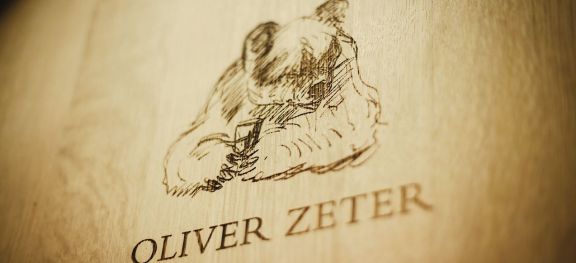Oliver Zeter Sauvignon Blanc Fumé 2018 Pfalz

Very far from Marlborough...
From €16.80, 21.40 Swiss francs, £20.99, HK$280
A German Sauvignon Blanc? Has she gone mad?
You might be forgiven for wondering if you live outside Germany, but I am reliably informed by our German specialist Michael Schmidt, currently tasting his way through hundreds of samples at home in the Ahr that he might otherwise have encountered in Mainz in April, that Sauvignon Blanc is pretty fashionable in Germany right now.
I was amused by what the official Wines of Germany website has to say about German Sauvignon: ‘There are now ca. 950 ha of Sauvignon Blanc vines in Germany, primarily in the Pfalz, Rheinhessen, and Baden, and to the surprise of some, a number of these wines have received very high marks at international tastings in recent years.’
I’d second that enthusiasm. I have just been tasting my way through 150-odd 2019 German wine samples supplied by UK specialist wine merchant Howard Ripley. There was only one Sauvignon Blanc among them, from Georg Mosbacher in the Pfalz, but it was impressive.
The wine that has really caught my attention though is imported into the UK by Delibo: Oliver Zeter Sauvignon Blanc Fumé 2018 Pfalz, oaked Sauvignon from another Pfalz grower, one who actually specialises in Sauvignon Blanc. Oliver Zeter has planted seven different clones of Sauvignon in seven different vineyards, with different soils, that he owns in the southern Pfalz and the Mittelhaardt. His aim is to harness many different flavours and expressions of the variety.
For this, his top Sauvignon, grapes come from his oldest vines and most propitiously sited vineyards. They are picked by hand into small containers, crushed and pressed and then fermented – no added yeast – in new French oak barrels. The wine is certainly ripe but keeps its zip thanks to suppressed malolactic conversion. The wine is then kept on fine lees in tank until being bottled the summer after the harvest. Those vital statistics the Germans love so much: alcohol 13%, total acidity 6.4 g/l and residual sugar 2.7 g/l. The oak component is not excessive.
My tasting note: ‘A very serious Sauvignon with some honeysuckle and weight but quite enough freshness. Green grassy aromas before the richness imbued by the winemaking kicks in. Very appetising. When Germany produces a really interesting, well-balanced Sauvignon, you know the wine world is truly changing and we all have to run to keep up. A hint of reduction is encouraged. Quite long. I actually prefer this to the Pinot Noirs.’
I gave it a score of 17/20 and reckon it will drink well for another two years – it also lasted forever in my fridge.
Oliver Zeter and his brother Christian, who runs the family wine importing and distributing business, have been bottling their own wine only since the 2007 vintage. Oliver trained at Dr Deinhard initially, then at Mezzacorona in Italy but it was while working for a year at Buitenverwachting in Constantia, South Africa, that he had a 'eureka' moment tasting their 1990 Sauvignon Blanc and decided to try to make a fine example in the Pfalz.
Back home, supported by his family, he owns or leases a total of 6 ha (15 acres) in various plots. Most of their other wines are Pinot Noir, and I was also impressed by their Pinot Noir Reserve 2017, which sells for not much more than the Sauvignon Blanc Fumé.
The drinking bear depicted on the labels, and barrel heads, is the work of well known Pfalz artist Otto Dill, a friend of Oliver’s great grandfather Walter Baer (German for bear). When Walter was unable to meet his friends for their regular glass of wine, the artist sent the sketch on a postcard to his friend Walter the ‘bear’, with the postcard signed by everyone present that day. Oliver has the postcard in his kitchen. He decided that because the bear had been with him all his life, it would go on the label when he made wine.
The wine is particularly widely available in Germany – not surprisingly – but can also be found at many an independent wine merchant in the UK as well as in Austria, Switzerland, the Netherlands, Italy and Hong Kong.
Become a member to view this article and thousands more!
- 15,430 featured articles
- 274,111 wine reviews
- Maps from The World Atlas of Wine, 8th edition (RRP £50)
- The Oxford Companion to Wine, 5th edition (RRP £50)
- Members’ forum
- 15,430 featured articles
- 274,111 wine reviews
- Maps from The World Atlas of Wine, 8th edition (RRP £50)
- The Oxford Companion to Wine, 5th edition (RRP £50)
- Members’ forum
- Commercial use of our Tasting Notes

